|
Explore our modern twist on historic cartes-de-visite (photographic calling cards) to get to know some of the NPS women who have helped manage, protect, and share our national parks. As you “meet” them, reflect on the times in which they lived, their societal norms, and how each woman was extraordinary in her own way. 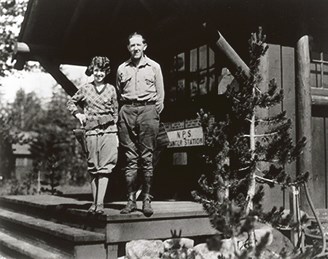
Early Park RangersThe first woman ranger was hired in 1918. Although early rangers at Yellowstone National Park wore the standard NPS uniform, others wore badges on their clothes as the emblem of their authority. These women enforced park regulations, conducted patrols on horseback, registered vehicles entering parks, and even made a few arrests! 
Early Ranger-NaturalistsAlthough many of the early women park rangers performed naturalist duties, the women featured here were hired under the ranger-natural title. Naturalists gave public lectures, led guided walks, staffed park museums, collected specimens, answered questions for visitors, and wrote articles about park history and resources. 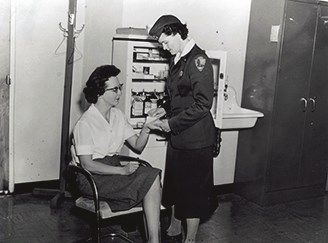
Early Park GuidesCarlsbad Caverns National Park hired more women in the 1930s and 1940 than any other park. Most of the women guides who led tours in the caverns had nursing or first aid training, so they knew how to deal with the fainters! 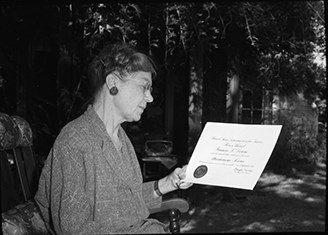
Women in AdministrationSecretaries and clerks, stenographers and telephone operators, information officers, writers and editors, human resource specialists who get people hired (and paid!), and many other type of administrators—these are positions essential to the smooth operation of any organization. 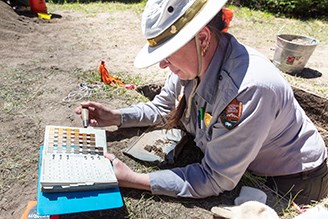
Women in Cultural ResourcesWith so much history, archeology, art, and culture in national parks, women in cultural resources management fields perform essential functions for the documentation, preservation, and conservation of our irreplaceable heritage. 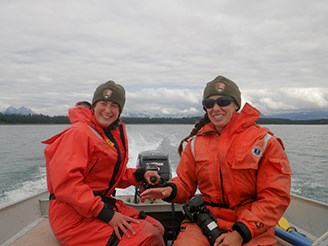
Women in Natural ResourcesBiologists, botanists, paleontologists, and geologists are just some of the “ists” who use science to understand, manage, and protect unique and fragile park ecosystems. 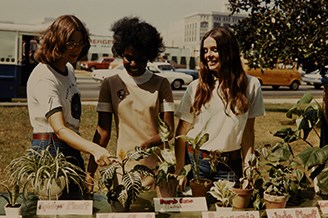
Women in InterpretationNPS interpreters wear many hats (besides the ranger flat hat, of course!). They tell engaging stories, share history, lead tours and hikes, answer visitors’ questions, explain why you shouldn’t try to pet that bison, provide directions and orientation, swear-in junior rangers, and create interpretive media to help visitors of all ages understand why a park (and the NPS) is significant. 
Women in Law EnforcementAlthough the term “park ranger” is applied pretty broadly in the NPS and the public doesn’t always distinguish between different positions wearing the same uniform, these rangers have special responsibilities and authorities to enforce the laws and regulations in parks that keep people safe and protect your national parks. 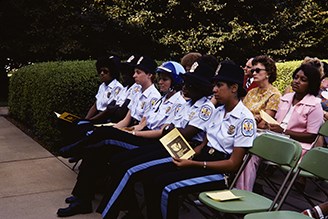
Women in the U.S. Park PoliceThe U.S. Park Police is a unit of the NPS with jurisdiction in all Federal parks. Its officers are located in the Washington, DC, New York City, and San Francisco metropolitan areas. The officers also carry out services for special events conducted in the iconic national parks. 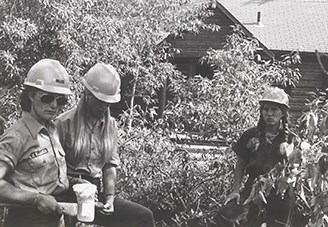
Women in Facilities & MaintenanceNPS “maintenance staff” include a broad range of essential skills and jobs that both protect natural and cultural resources and keep areas clean and safe for visitors to enjoy. Positions range from electricians, carpenters, and plumbers to custodial staff, groundskeepers, mechanics, road or trail crews, and even architects and boat captains! 
Women Custodians & SuperintendentsCustodians, site managers, center directors, and superintendents—they all manage individual NPS units or key offices of the NPS. They are responsible for ensuring that park management actions don’t impair cultural or natural resources and employees and visitors are safe. It’s more complicated than that, of course, but whether it’s long-range planning, community relations, hiring or firing employees, developing partnerships, recovering from disasters, or just dealing with the day-to-day bureaucracy, this is where “the buck stops” in any park. 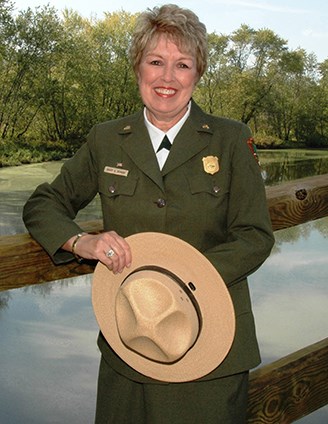
Women at the TopFor much of NPS history, women have been excluded from the highest positions in the bureau—regional directors, associate or assistant directors, and directors. Some women, however, have broken through those barriers—let’s hope there are more to come! 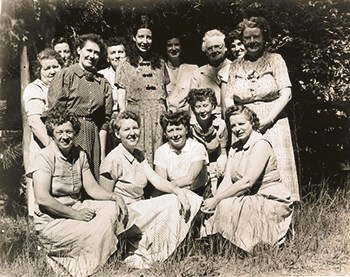
Honorary EmployeesHonorary (read “unpaid”) women used their knowledge, skills, and experience to support not just their husbands but also their parks and communities. Some “park wives” started their own careers with the NPS before their marriages and knew what to expect with a life in the Park Service. For many others, the challenges of living in parks while supporting their husbands and raising their families were completely unexpected. Most adapted to the remote duty stations, wildlife, frequent moves, and logistical challenges with humor and grace. 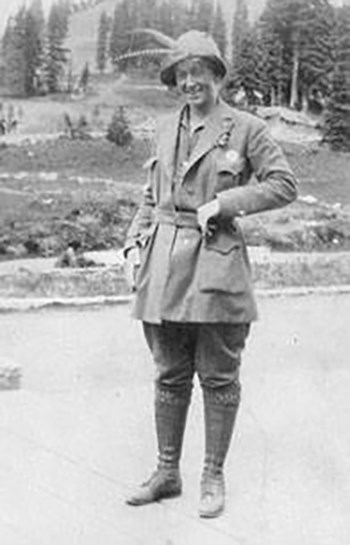
Other Women Working in ParksThe earliest women to work in many national parks never worked for the NPS. Instead, they owned or worked for the companies that ran park hotels, restaurants, campgrounds, and other visitor facilities. Some women were certified guides and led tours and climbing expeditions. Although these women were not paid by the NPS, they provided important services and were certainly pioneers in their fields, serving as role models for women both within and outside the NPS. Explore More!To learn more about Women and the NPS Uniform, visit Dressing the Part: A Portfolio of Women's History in the NPS. |
Last updated: March 1, 2022
